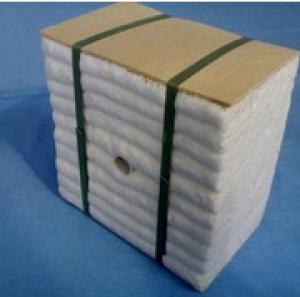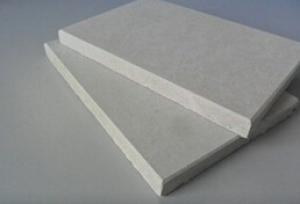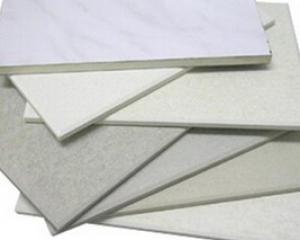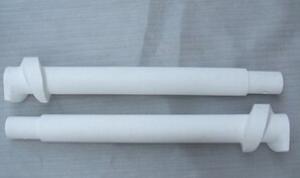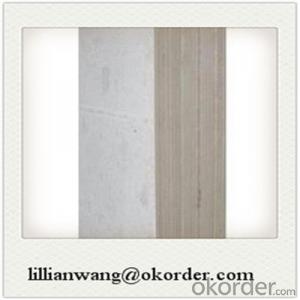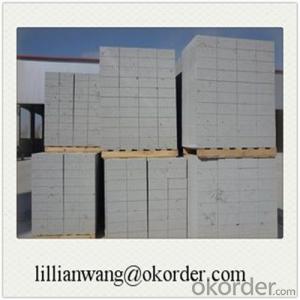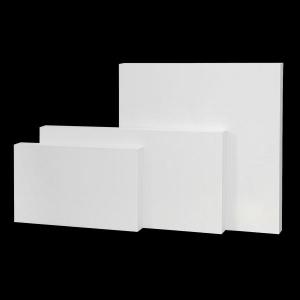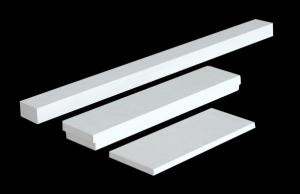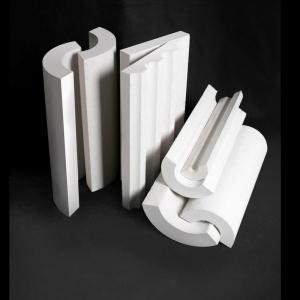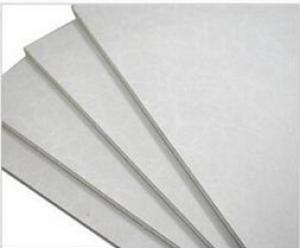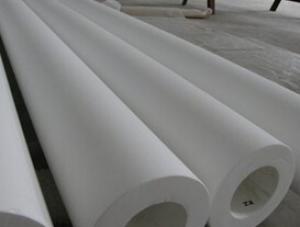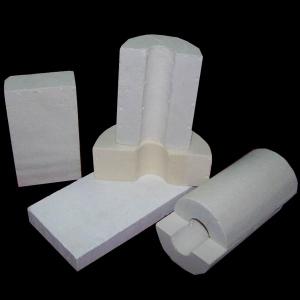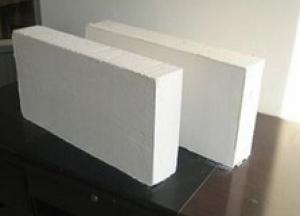Refractory Ceramic Fiber Module For Boiler Insulation
- Loading Port:
- China Main Port
- Payment Terms:
- TT OR LC
- Min Order Qty:
- -
- Supply Capability:
- -
OKorder Service Pledge
OKorder Financial Service
You Might Also Like
Technical Data | ||||||||||||||||||||||||||||||||||||||||||||||||||||||||||||||||||||||||||||||||||||||||
| Main Technical Property of Ceramic Fiber Module:
Note: 1. Product which is classified in accordance with temperature range, can be divided into ceramic fiber cutout, ceramic fiber module and ceramic fiber folded module by different production methods. Our factory is equipped with advanced laboratory; all the figures in the above table are from experiment. We all provide other experiment figures according to customers' requirements.
Size and Specifications of Ceramic Fiber Module:
| ||||||||||||||||||||||||||||||||||||||||||||||||||||||||||||||||||||||||||||||||||||||||
Ceramic fiber will perform excellent refractoriness and improve the integrated thermal insulating performance of the furnace.
Characteristic: (1) Excellent refractoriness
(2) Excellent chemical stability and thermal stability
(3) Low thermal conductivity, low thermal capacity
(4) Resist to external mechanical forces
(5) Able to withstand any thermal shock
(6) Generate no gaps between modules
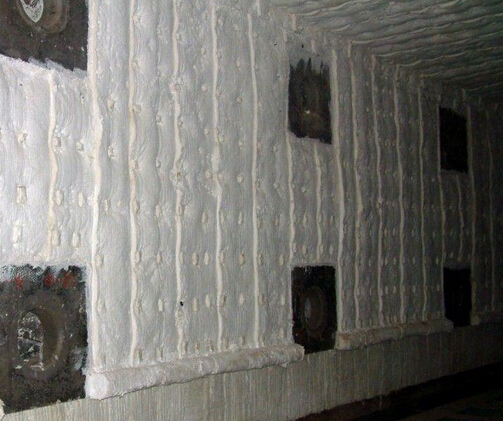

- Q:What is the maximum temperature at which the glass is cured?
- There is no definite melting point. Ordinary glass is a substance which is made up of soda ash, calcium silicate and silicon dioxide, and Shi Yinghe feldspar is the main raw material.
- Q:What are the three major effects of fly ash in concrete?
- The "form effect" of fly ash contains many glass beads, the surface is smooth and the texture is dense. It is this form to water reducing effect, compact and homogeneous effect, can promote the early hydration of cement flocculation effect of solution, change the mixture rheological properties, the initial structure and hardening of the various functions, especially for pumping concrete, can play a good role in lubrication.
- Q:What's the use of white portland cement?
- White portland cement as the raw meal with the proper components till the partial melting of the calcium silicate as the main ingredient, the iron content in clinker less addition of gypsum, white water ground made of rigid cementitious material. When grinding cement, allow limestone not to exceed 5% of the cement weight. White cement is mostly ornamental, and its manufacturing process is much better than ordinary cement. The gap is mainly used to hook white tiles, is generally not used in the wall, the reason is not high strength. It is available in the building materials market or decoration materials shop.
- Q:What's the use of low carbon steel insulated nail hooks for power plants?
- The current power plant thermal insulation is mainly carried out by use of various types of insulation materials, thermal insulation materials commonly used include calcium silicate products, pipes, rock and aluminum silicate fiber products, due to their different properties are applicable to different environments. The equipment with temperature at 300-600 DEG C often adopts aluminium silicate products and calcium silicate products to compound heat preservation. While the temperature is less than 300 degrees, the mineral wool products are usually used for thermal insulation.
- Q:What are the exterior walls of the building besides the benzene board and the extruded board?
- Foam heat insulation material mainly includes two categories, polymer foam type insulation material and foam asbestos insulation material. Polymer foam thermal insulation material has the advantages of small absorption rate, stable heat preservation effect, low thermal conductivity, no dust flying in construction, easy construction, etc., and it is in the period of popularization and application.
- Q:Cement is not silicate products
- Usually refers to silicate products with lime (calcium containing materials) and sand, fly ash, slag (siliceous materials), then add a small amount of gypsum, the steam steam curing or steam curing, building products quickly generate Tobey mullite, calcium silicate, hydrated calcium aluminate sulfate and hydrated calcium aluminate such as cementitious materials and production. Such as: autoclaved fly ash (sand), autoclaved aerated concrete, autoclaved fly ash brick, autoclaved sand lime bricks.
- Q:The ceiling of calcium silicate board and mineral wool board which is good
- Mineral wool board ceiling is different than the calcium silicate board ceiling.Or with the calcium silicate board, mineral wool board first big thickness, increase the keel pressure, easy to cause the ceiling of the cave. Second, it is easy to produce some bug mineral wool board.
- Q:What are the high temperature resistant insulation materials at 400?
- According to the general rules of equipment and piping insulation, heat insulation material is a material with a thermal conductivity of less than 0.14W/ (m*K) when the average temperature is equal to or less than 623K (350 degrees Celsius). Heat insulation material is usually light, porous, porous, small thermal conductivity characteristics. Generally used to prevent heat loss of equipment and pipes, or frozen (also known as general cold) and low temperature (also known as cryogenic) use, so in our country, insulation materials, also known as insulation or cold preservation materials. At the same time, because of the porous and fibrous structure of thermal insulation material, it has good sound absorption function, so it is also widely used in the construction industry.
- Q:Eterpan with calcium silicate is sold on the market are the same thing? Non asbestos calcium silicate board is Eterpan it
- The market is generally understood, but in fact, Eterpan belongs to Guangzhou eternit limited production of the 100 year history of eternit brand board, because the cement product is Belgium hetet group invention.
- Q:What is a building energy-saving materials?
- As far as its varieties are concerned, the new wall materials mainly include bricks, blocks and slabs, such as clay hollow bricks, waste clay bricks, non clay bricks, building blocks, aerated concrete, light plates and composite boards.
1. Manufacturer Overview |
|
|---|---|
| Location | |
| Year Established | |
| Annual Output Value | |
| Main Markets | |
| Company Certifications | |
2. Manufacturer Certificates |
|
|---|---|
| a) Certification Name | |
| Range | |
| Reference | |
| Validity Period | |
3. Manufacturer Capability |
|
|---|---|
| a)Trade Capacity | |
| Nearest Port | |
| Export Percentage | |
| No.of Employees in Trade Department | |
| Language Spoken: | |
| b)Factory Information | |
| Factory Size: | |
| No. of Production Lines | |
| Contract Manufacturing | |
| Product Price Range | |
Send your message to us
Refractory Ceramic Fiber Module For Boiler Insulation
- Loading Port:
- China Main Port
- Payment Terms:
- TT OR LC
- Min Order Qty:
- -
- Supply Capability:
- -
OKorder Service Pledge
OKorder Financial Service
Similar products
New products
Hot products
Hot Searches
Related keywords
